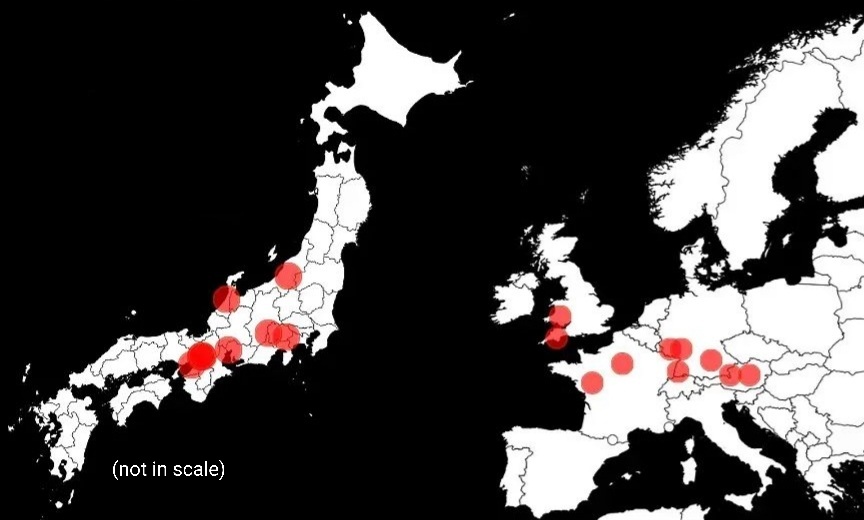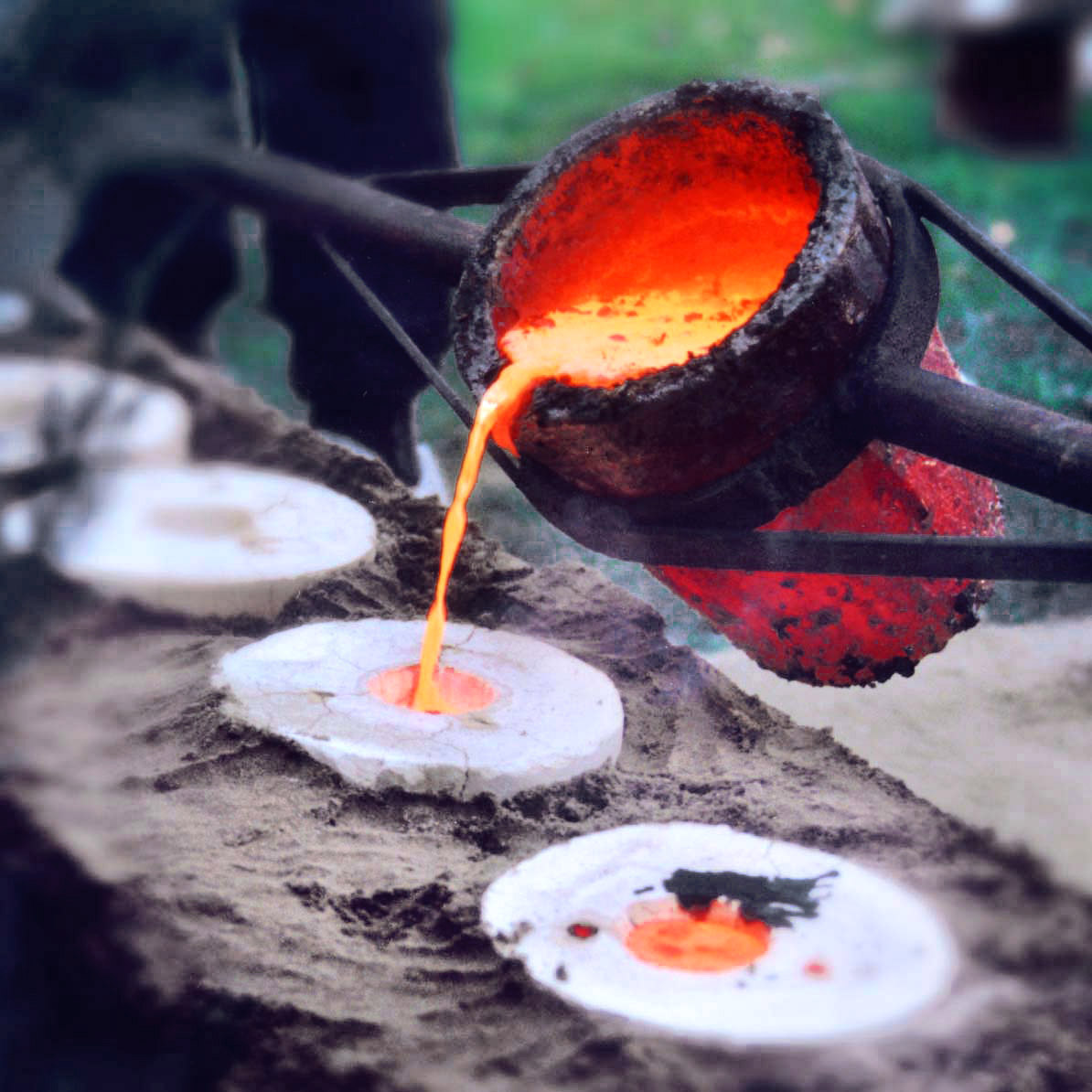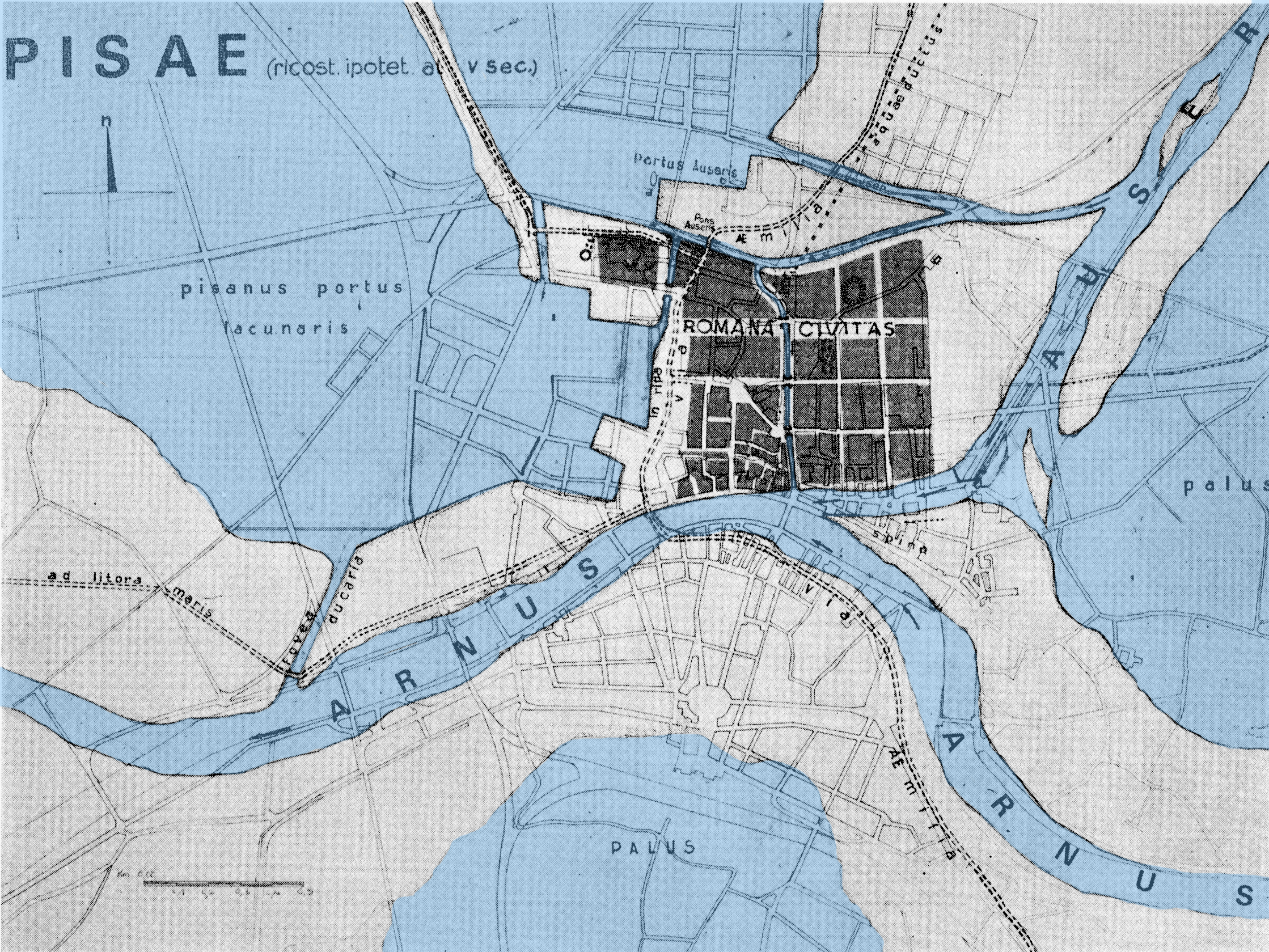|
Marinelli Bell Foundry
Marinelli Bells – Pontifical Bell Foundry ( it, Campane Marinelli – Pontificia Fonderia di Campane) is a bell foundry in Agnone, Italy. Founded no later than 1339, the foundry is one of the oldest family businesses in Italy. In addition to bells, it produces bronze portals, bas-reliefs, church artifacts, and bell restorations. Marinelli family The Marinelli family first started the bell foundry nearly 1,000 years ago in the Apennine hills of Italy, in the Kingdom of Naples. The village of Agnone, a small Italian town of 5,200 inhabitants in the province of Isernia in Molise, is where the foundry is now located. The foundry "has a tradition of foundries that dates back 10 centuries." In 1924, the foundry was awarded "the title of pontifical foundry" by the Vatican. The Roman Catholic Church now accounts for 90 percent of all orders placed for the company. [...More Info...] [...Related Items...] OR: [Wikipedia] [Google] [Baidu] |
Agnone
Agnone is a ''comune'' in the province of Isernia, in the Molise region of southern Italy, some northwest of Campobasso. Agnone is known for the manufacture of bells by the Marinelli Bell Foundry. The town of Agnone proper is complemented with other populated centers like Fontesambuco, Villa Canale and Rigaini. History Samnites The Samnites comprised several distinct tribes in Samnium, a wholly inland district of south central Italy named after them. The Pentri tribe of the Samnites was the most powerful and based in Bovianium, which was a city some south of present Agnone. Agnone is in the center of important archaeological vestiges of the old Oscan-Samnite civilization and has been called “the Athens of the Sannio” due to the large number of ancient ruins of the Samnite culture.''Dictionary of Greek and Roman Geography''. William Smith, LLD. London. Walton and Maberly, Upper Gower Street and Ivy Lane, Paternoster Row; John Murray, Albemarle Street. 1854. According to tr ... [...More Info...] [...Related Items...] OR: [Wikipedia] [Google] [Baidu] |
Monte Cassino
Monte Cassino (today usually spelled Montecassino) is a rocky hill about southeast of Rome, in the Latin Valley, Italy, west of Cassino and at an elevation of . Site of the Roman town of Casinum, it is widely known for its abbey, the first house of the Benedictine Order, having been established by Benedict of Nursia himself around 529. It was for the community of Monte Cassino that the Rule of Saint Benedict was composed. The first monastery on Monte Cassino was sacked by the invading Lombards around 570 and abandoned. Of the first monastery almost nothing is known. The second monastery was established by Petronax of Brescia around 718, at the suggestion of Pope Pope Gregory II, Gregory II and with the support of the Lombard Duke Romuald II of Benevento. It was directly subject to the pope and many monasteries in Italy were under its authority. In 883, the monastery was sacked by Saracens and abandoned again. The community of monks resided first at Teano and then from 914 at C ... [...More Info...] [...Related Items...] OR: [Wikipedia] [Google] [Baidu] |
Bell Foundries Of Italy
A bell is a struck idiophone, directly struck idiophone percussion instrument. Most bells have the shape of a hollow cup that when struck vibrates in a single strong strike tone, with its sides forming an efficient resonator. The strike may be made by an internal "clapper" or "uvula", an external hammer, or—in small bells—by a small loose sphere enclosed within the body of the bell (jingle bell). Bells are usually cast from bell metal (a type of bronze) for its resonant properties, but can also be made from other hard materials. This depends on the function. Some small bells such as ornamental bells or cowbells can be made from cast or pressed metal, glass or ceramic, but large bells such as a church, clock and tower bells are normally cast from bell metal. Bells intended to be heard over a wide area can range from a single bell hung in a turret or bell-gable, to a musical ensemble such as an English ring of bells, a carillon or a Russian Russian Orthodox bell ringing, zvon ... [...More Info...] [...Related Items...] OR: [Wikipedia] [Google] [Baidu] |
List Of Oldest Companies
This list of the oldest companies in the world includes brands and companies, excluding associations and educational, government, or religious organizations. To be listed, a brand or company name must remain operating, either in whole or in part, since inception. Note however that such claims are often open to question and should be researched further before citing them. Statistics According to a report published by the Bank of Korea in 2008 that looked at 41 countries, there were 5,586 companies older than 200 years. Of these, 3,146 (56%) are in Japan, 837 (15%) in Germany, 222 (4%) in the Netherlands, and 196 (3%) in France. Of the companies with more than 100 years of history, most of them (89%) employ fewer than 300 people. In Japan, very old companies, called ''shinise'', are particularly prestigious. A nationwide Japanese survey counted more than 21,000 companies older than 100 years as of September 30, 2009. Founded before 1300 1300 to 1399 1400 to 1499 ... [...More Info...] [...Related Items...] OR: [Wikipedia] [Google] [Baidu] |
Bronze
Bronze is an alloy consisting primarily of copper, commonly with about 12–12.5% tin and often with the addition of other metals (including aluminium, manganese, nickel, or zinc) and sometimes non-metals, such as phosphorus, or metalloids such as arsenic or silicon. These additions produce a range of alloys that may be harder than copper alone, or have other useful properties, such as strength, ductility, or machinability. The archaeological period in which bronze was the hardest metal in widespread use is known as the Bronze Age. The beginning of the Bronze Age in western Eurasia and India is conventionally dated to the mid-4th millennium BCE (~3500 BCE), and to the early 2nd millennium BCE in China; elsewhere it gradually spread across regions. The Bronze Age was followed by the Iron Age starting from about 1300 BCE and reaching most of Eurasia by about 500 BCE, although bronze continued to be much more widely used than it is in modern times. Because histori ... [...More Info...] [...Related Items...] OR: [Wikipedia] [Google] [Baidu] |
Lost-wax Casting
Lost-wax casting (also called " investment casting", "precision casting", or ''cire perdue'' which has been adopted into English from the French, ) is the process by which a duplicate metal sculpture (often silver, gold, brass, or bronze) is cast from an original sculpture. Intricate works can be achieved by this method. The oldest known examples of this technique are approximately 6,500-year-old (4550–4450 BC) and attributed to gold artefacts found at Bulgaria's Varna Necropolis. A copper amulet from Mehrgarh, Indus Valley civilization, in Pakistan, is dated to circa 4,000 BC. Cast copper objects, found in the Nahal Mishmar hoard in southern Israel, which belong to the Chalcolithic period (4500–3500 BC), are estimated, from carbon-14 dating, to date to circa 3500 BC. In Other examples from somewhat later periods are from Mesopotamia in the third millennium BC. Lost-wax casting was widespread in Europe until the 18th century, when a piece-moulding process came to pred ... [...More Info...] [...Related Items...] OR: [Wikipedia] [Google] [Baidu] |
Pisa Leaning Tower Bell
Pisa ( , or ) is a city and ''comune'' in Tuscany, central Italy, straddling the Arno just before it empties into the Ligurian Sea. It is the capital city of the Province of Pisa. Although Pisa is known worldwide for its leaning tower, the city contains more than twenty other historic churches, several medieval palaces, and bridges across the Arno. Much of the city's architecture was financed from its history as one of the Italian maritime republics. The city is also home to the University of Pisa, which has a history going back to the 12th century, the Scuola Normale Superiore di Pisa, founded by Napoleon in 1810, and its offshoot, the Sant'Anna School of Advanced Studies.Scuola Superiore Sant'Anna di Pisa Information statistics History An ...
|
Food And Agriculture Organization
The Food and Agriculture Organization of the United Nations (FAO)french: link=no, Organisation des Nations unies pour l'alimentation et l'agriculture; it, Organizzazione delle Nazioni Unite per l'Alimentazione e l'Agricoltura is an international organization that leads international efforts to defeat hunger and improve nutrition and food security. Its Latin motto, ', translates to "let there be bread". It was founded on 16 October 1945. The FAO is composed of 195 members (including 194 countries and the European Union). Their headquarters is in Rome, Italy, and the FAO maintains regional and field offices around the world, operating in over 130 countries. It helps governments and development agencies coordinate their activities to improve and develop agriculture, forestry, fisheries, and land and water resources. It also conducts research, provides technical assistance to projects, operates educational and training programs, and collects data on agricultural output, pro ... [...More Info...] [...Related Items...] OR: [Wikipedia] [Google] [Baidu] |
Headquarters Of The United Nations
zh, 联合国总部大楼french: Siège des Nations uniesrussian: Штаб-квартира Организации Объединённых Наций es, Sede de las Naciones Unidas , image = Midtown Manhattan Skyline 004.jpg , image_size = 400px , caption = Viewed across the East River from Roosevelt Island in 2021; from left to right: the Secretariat, Conference, and General Assembly buildings. In the background (from left to right) are the Empire State Building, the Chrysler Building, One Vanderbilt, and other skyscrapers. , location = , address = 760 United Nations Plaza,Manhattan, New York City, New York ( 10017-6818),United States , coordinates = , start_date = , completion_date = , inauguration_date = , architect = Board of designers mediated by Harrison & Abramovitz , owner = United Nations , cost = $65 million ($ adjusted for inflation) , floor_count = 39 ... [...More Info...] [...Related Items...] OR: [Wikipedia] [Google] [Baidu] |
Pope John Paul II
Pope John Paul II ( la, Ioannes Paulus II; it, Giovanni Paolo II; pl, Jan Paweł II; born Karol Józef Wojtyła ; 18 May 19202 April 2005) was the head of the Catholic Church and sovereign of the Vatican City State from 1978 until his death in April 2005, and was later canonised as Pope Saint John Paul II. He was elected pope by the second papal conclave of 1978, which was called after John Paul I, who had been elected in August to succeed Pope Paul VI, died after 33 days. Cardinal Wojtyła was elected on the third day of the conclave and adopted the name of his predecessor in tribute to him. Born in Poland, John Paul II was the first non-Italian pope since Adrian VI in the 16th century and the second-longest-serving pope after Pius IX in modern history. John Paul II attempted to improve the Catholic Church's relations with Judaism, Islam, and the Eastern Orthodox Church. He maintained the church's previous positions on such matters as abortion, artificia ... [...More Info...] [...Related Items...] OR: [Wikipedia] [Google] [Baidu] |
Americas
The Americas, which are sometimes collectively called America, are a landmass comprising the totality of North and South America. The Americas make up most of the land in Earth's Western Hemisphere and comprise the New World. Along with their associated islands, the Americas cover 8% of Earth's total surface area and 28.4% of its land area. The topography is dominated by the American Cordillera, a long chain of mountains that runs the length of the west coast. The flatter eastern side of the Americas is dominated by large river basins, such as the Amazon, St. Lawrence River– Great Lakes basin, Mississippi, and La Plata. Since the Americas extend from north to south, the climate and ecology vary widely, from the arctic tundra of Northern Canada, Greenland, and Alaska, to the tropical rain forests in Central America and South America. Humans first settled the Americas from Asia between 42,000 and 17,000 years ago. A second migration of Na-Dene speakers followe ... [...More Info...] [...Related Items...] OR: [Wikipedia] [Google] [Baidu] |
Christopher Columbus
Christopher Columbus * lij, Cristoffa C(or)ombo * es, link=no, Cristóbal Colón * pt, Cristóvão Colombo * ca, Cristòfor (or ) * la, Christophorus Columbus. (; born between 25 August and 31 October 1451, died 20 May 1506) was an Italian explorer and navigator who completed four voyages across the Atlantic Ocean sponsored by the Catholic Monarchs of Spain, opening the way for the widespread European exploration and colonization of the Americas. His expeditions were the first known European contact with the Caribbean, Central America, and South America. The name ''Christopher Columbus'' is the anglicisation of the Latin . Scholars generally agree that Columbus was born in the Republic of Genoa and spoke a dialect of Ligurian as his first language. He went to sea at a young age and travelled widely, as far north as the British Isles and as far south as what is now Ghana. He married Portuguese noblewoman Filipa Moniz Perestrelo, who bore his son Diego, and w ... [...More Info...] [...Related Items...] OR: [Wikipedia] [Google] [Baidu] |








_crop.png)

